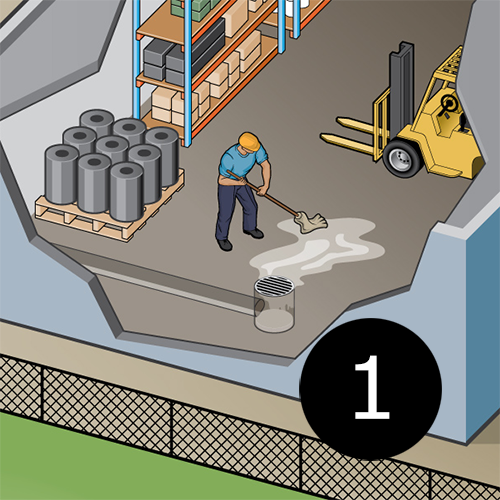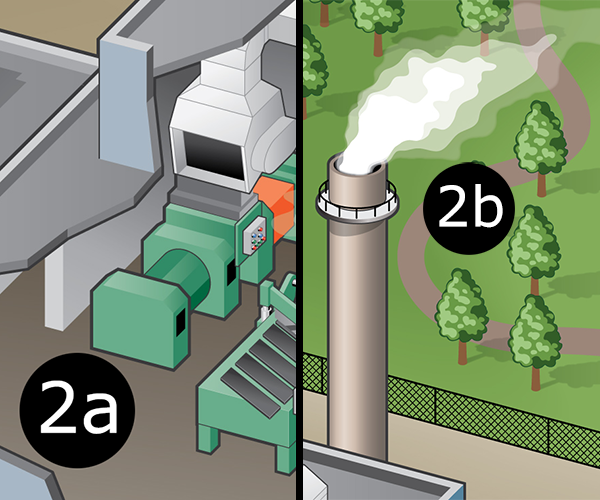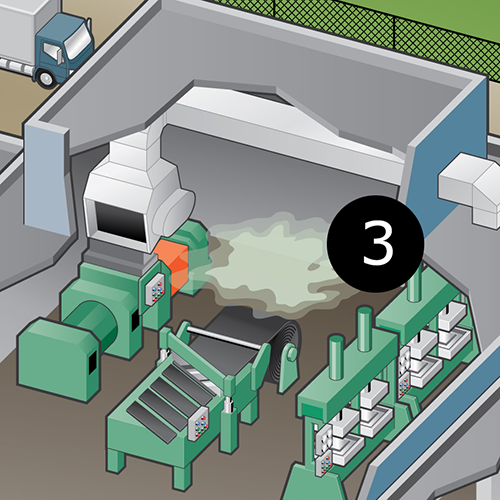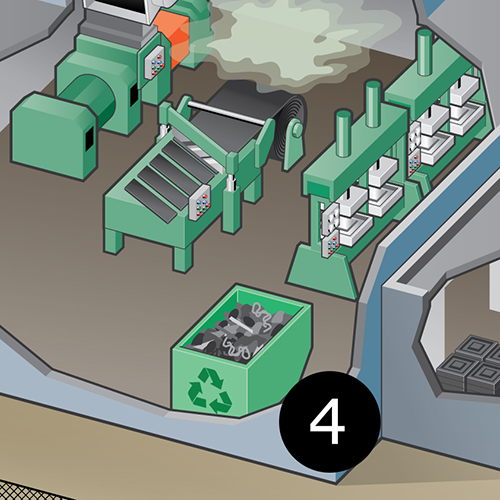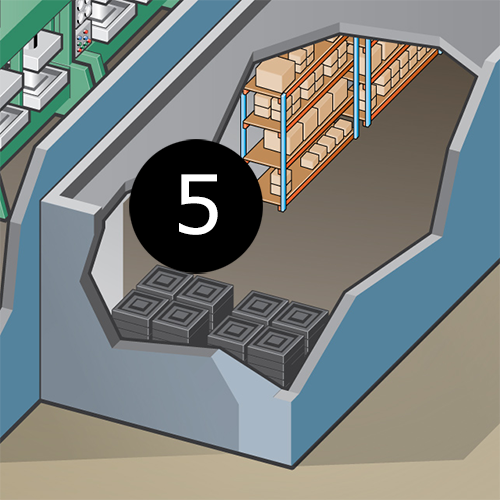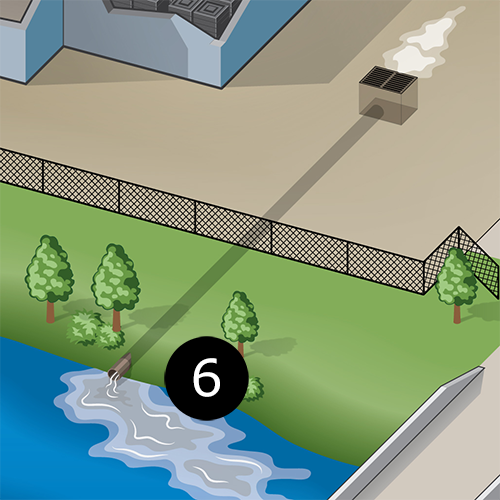Look Inside a TRI Facility
This webpage shows a fictional facility that manufactures rubber products. Click on the numbers in the graphic for examples of how three TRI-covered chemicals are used, managed, and released into the environment at this facility.
See a text version of the interactive content on this page: Text Description of TRI Facility Diagram (pdf)
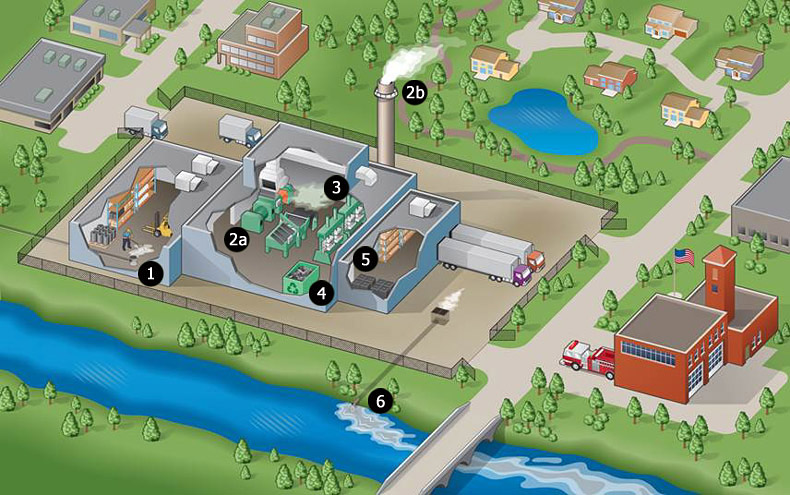
About this Webpage
The diagram shown above illustrates an example of a facility that meets TRI reporting requirements, including how and where TRI chemicals are used at the facility. The diagram is not intended to represent exactly what happens at every TRI facility, as chemicals and processes vary across facilities and industry sectors.
Please note that definitions of TRI terms on this webpage have been simplified for educational purposes and should not be relied upon to determine a facility’s TRI reporting obligations. See the TRI Reporting Forms and Instructions for extensive reporting guidance.
Finally, please also note that this diagram only encompasses information that relates to TRI reporting and doesn’t reflect if or how this facility is regulated by other EPA programs.

